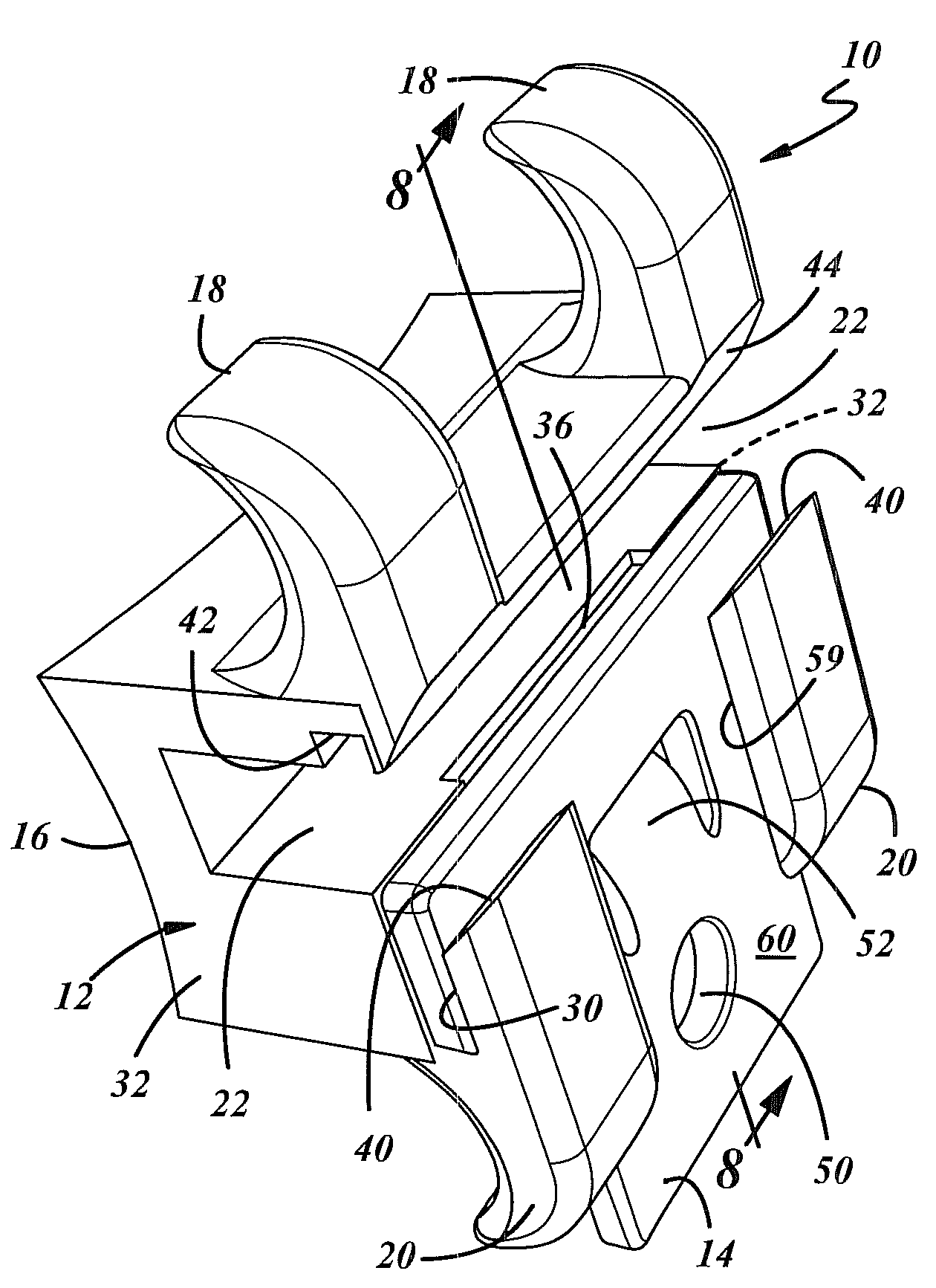Self-ligating orthodontic bracket
a self-ligating, orthodontic technology, applied in the field of self-ligating orthodontic brackets, can solve the problems of affecting the ability of rotation,
- Summary
- Abstract
- Description
- Claims
- Application Information
AI Technical Summary
Benefits of technology
Problems solved by technology
Method used
Image
Examples
Embodiment Construction
Referring now to FIG. 1, a self-ligating orthodontic bracket 10 has a body 12 and a clip 14. The body 12 as shown in FIG. 2 may be made from a metal material such as titanium. It has a contoured lingual surface 16 for adhering to a tooth member. The figures are oriented to show the bracket 10 as it would be basically viewed on a patient's upper teeth when the patient is sitting upright. When installed on lower teeth, the bracket 10 would be turned upside down from as shown in the drawings. A pair of gingival tie wings 18 and a pair of occlusal tie wings 20 extend from the body 12. An archwire slot 22 extends laterally through the body 12 to hold an archwire 24 as shown in FIG. 7.
As more clearly shown in FIGS. 2 and 5, two slotted internal track sections 26 i.e. track slots 26 run vertically along the axially inner edge 28 of the pair of occlusal tie wings to slideably engage the clip 14. As shown in FIGS. 1, 2 and 6, two laterally outer track sections, cutaway, or pocket sections 30...
PUM
 Login to View More
Login to View More Abstract
Description
Claims
Application Information
 Login to View More
Login to View More - R&D
- Intellectual Property
- Life Sciences
- Materials
- Tech Scout
- Unparalleled Data Quality
- Higher Quality Content
- 60% Fewer Hallucinations
Browse by: Latest US Patents, China's latest patents, Technical Efficacy Thesaurus, Application Domain, Technology Topic, Popular Technical Reports.
© 2025 PatSnap. All rights reserved.Legal|Privacy policy|Modern Slavery Act Transparency Statement|Sitemap|About US| Contact US: help@patsnap.com



